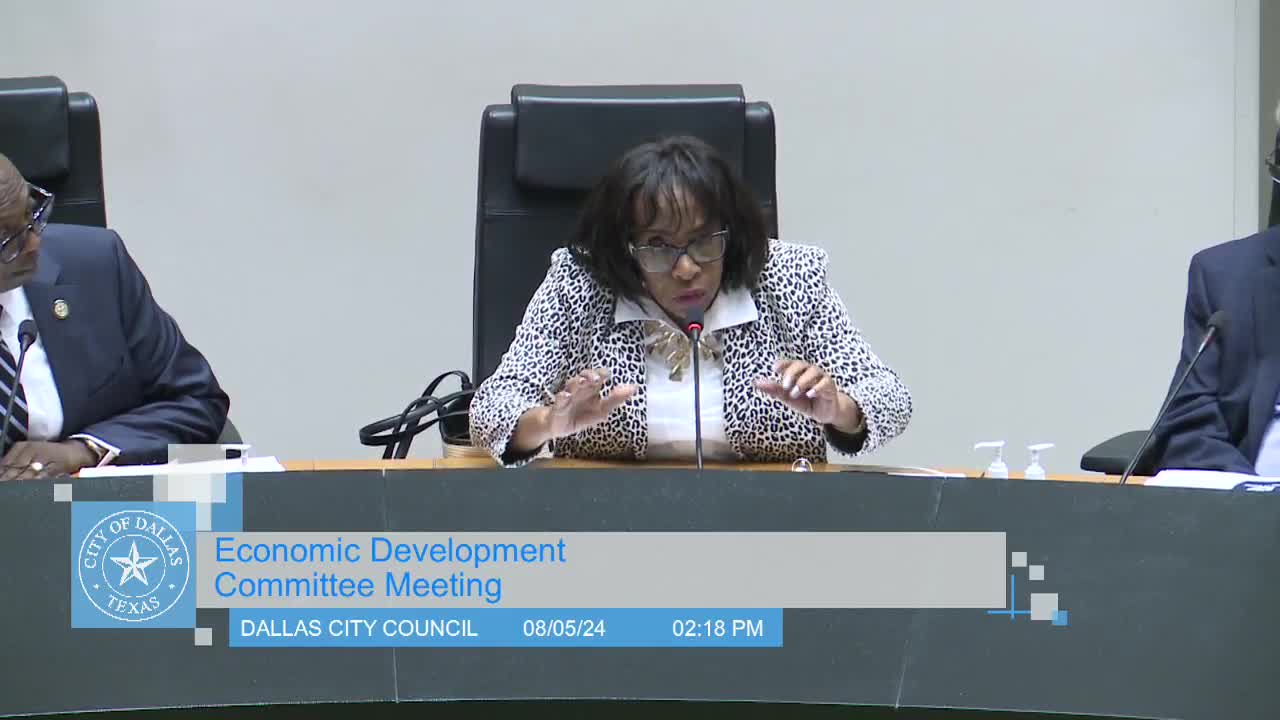Community leaders clash over future of single family neighborhoods
August 05, 2024 | Dallas, Dallas County, Texas

This article was created by AI summarizing key points discussed. AI makes mistakes, so for full details and context, please refer to the video of the full meeting. Please report any errors so we can fix them. Report an error »

In a recent government meeting, officials discussed pressing concerns regarding land use planning and its implications for local neighborhoods. A key topic was the impact of increased housing density, particularly the introduction of duplexes and accessory dwelling units (ADUs), on traffic and emergency services. One participant emphasized the challenges posed by more vehicles on the streets, urging the need for careful planning to maintain the integrity of single-family neighborhoods.
The conversation also touched on the legal distinctions between land use plans and zoning regulations. Officials clarified that the comprehensive plan serves as a guiding document and does not constitute zoning, which could lead to legal challenges if misinterpreted. This clarification aims to reassure residents that existing neighborhood structures will remain protected.
Concerns were raised about the financial implications of the current planning strategies, especially in light of a projected $40 million budget deficit. One official questioned whether a return on investment (ROI) analysis had been conducted to assess the financial viability of proposed land use changes. While no such analysis has been completed, discussions are underway to explore this as a future step.
The meeting also highlighted the desire for more diverse housing options, with officials acknowledging the need for townhomes and smaller living spaces to accommodate changing family dynamics. However, there is apprehension about the rise of larger homes, referred to as \"McMansions,\" which could disrupt the character of established neighborhoods. Officials indicated that measures could be taken to address these concerns without compromising the existing single-family home framework.
Overall, the discussions underscored the importance of balancing growth with community needs, ensuring that any changes to land use planning are made thoughtfully and with input from residents.
The conversation also touched on the legal distinctions between land use plans and zoning regulations. Officials clarified that the comprehensive plan serves as a guiding document and does not constitute zoning, which could lead to legal challenges if misinterpreted. This clarification aims to reassure residents that existing neighborhood structures will remain protected.
Concerns were raised about the financial implications of the current planning strategies, especially in light of a projected $40 million budget deficit. One official questioned whether a return on investment (ROI) analysis had been conducted to assess the financial viability of proposed land use changes. While no such analysis has been completed, discussions are underway to explore this as a future step.
The meeting also highlighted the desire for more diverse housing options, with officials acknowledging the need for townhomes and smaller living spaces to accommodate changing family dynamics. However, there is apprehension about the rise of larger homes, referred to as \"McMansions,\" which could disrupt the character of established neighborhoods. Officials indicated that measures could be taken to address these concerns without compromising the existing single-family home framework.
Overall, the discussions underscored the importance of balancing growth with community needs, ensuring that any changes to land use planning are made thoughtfully and with input from residents.
View full meeting
This article is based on a recent meeting—watch the full video and explore the complete transcript for deeper insights into the discussion.
View full meeting
